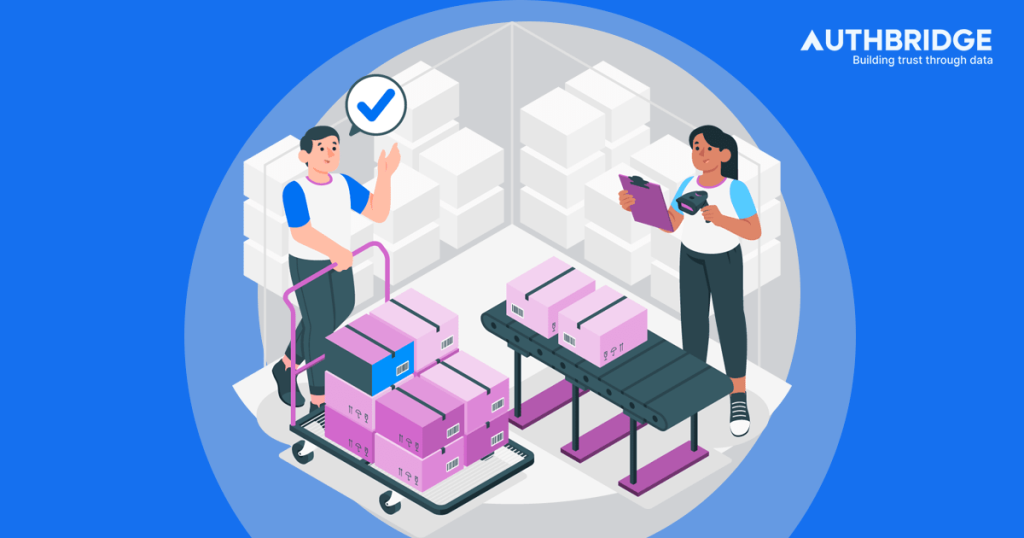Introduction
In supply chain management (SCM), selecting the right suppliers is critical to ensuring quality, sustainability, and efficiency in operations. This blog delves into the stages of the supplier selection process, providing a structured approach to identifying and partnering with the best vendors. Each stage of supplier selection is designed to mitigate risks, optimize cost savings, and enhance product quality, thereby supporting your business’s overarching goals.
Selecting the Right Suppliers for Your Business
Selecting the right supplier is not just about sourcing goods and services; it’s about forming strategic partnerships that will foster both immediate and long-term benefits for your business. The process starts with a clear understanding of your strategic needs and aligning them with what the market has to offer. This involves evaluating potential suppliers on various fronts such as their financial stability, capability to innovate, compliance with industry standards, and ability to meet your specific requirements. It’s critical to look beyond cost and consider factors such as reliability, quality, and the supplier’s reputation within the industry. By focusing on these elements, businesses can mitigate risks and increase the likelihood of a successful partnership.
Here are the stages of Supplier Selection:
Stage 1- Identifying Business Requirements
The foundation of any successful supplier selection process is a clear and comprehensive understanding of business requirements. Identifying what your business truly needs from its suppliers involves cross-departmental collaboration to ensure that every aspect of the company’s operational demands is addressed. This stage should result in a detailed list of requirements which could include quality specifications, volume needs, delivery timelines, cost constraints, and compliance requirements.
To effectively identify these requirements, businesses should consider conducting a needs analysis through tools like SWOT (Strengths, Weaknesses, Opportunities, Threats) to determine internal and external factors that will influence supplier expectations. For instance, a 2019 survey by Deloitte highlighted that 63% of companies consider the ability to meet compliance and ethical standards as a top criterion in their supplier selection process.
Table: Key Business Requirements Identified in Supplier Selection
Requirement Category | Description | Example Metrics |
Quality | Conformance to specified standards | ISO certification, product defect rate |
Cost | Budget alignment | Average cost per unit, total cost of ownership |
Delivery | Timeliness of services or goods | On-time delivery rate, lead time |
Compliance | Adherence to regulations | Compliance rate, audit results |
Innovation | Capability for future growth | Number of new technologies adopted, R&D investment |
Stage 2- Creating a Supplier Evaluation Scorecard
A supplier evaluation scorecard is an essential tool that encapsulates all the criteria deemed necessary for the selection of suppliers. This scorecard enables businesses to quantify and compare potential suppliers’ capabilities against standardized benchmarks. By using a structured approach, companies can objectively assess various facets such as financial health, technological advancement, customer service, and delivery performance.
Creating an effective scorecard involves selecting metrics that are directly linked to the core business objectives and the specific needs previously identified. It’s important to ensure these metrics are both measurable and relevant to facilitate fair and transparent assessments.
Table: Sample Supplier Evaluation Scorecard
Metric | Weight | Description | Measurement Method |
Financial Stability | 25% | Assesses the supplier’s financial health and longevity. | Credit rating, annual reports |
Quality Assurance | 30% | Evaluates the quality of the supplier’s products. | Defect rate, return rate |
Delivery Reliability | 20% | Measures the punctuality of deliveries. | On-time delivery percentage |
Cost Competitiveness | 15% | Examines how well the supplier’s costs align with budget constraints. | Comparison of bids, cost analysis |
Customer Support | 10% | Assesses the level of support provided by the supplier. | Customer service ratings, response time |
Example Scenario:
Imagine a manufacturing company evaluating suppliers for high-precision components. The scorecard might prioritize Quality Assurance due to the critical nature of the components in their final products, followed by Financial Stability to ensure long-term partnership viability.
Stage 3- Listing and Defining Supplier Evaluation Criteria
Once the supplier evaluation scorecard is established, the next critical step is to list potential suppliers and define the stringent evaluation criteria that will guide the selection process. This involves comprehensive research to source potential suppliers who can meet the predefined standards. Effective sourcing can be achieved through various channels such as industry conferences, online databases, trade publications, and referrals from trusted industry contacts.
The criteria for evaluating suppliers should be explicitly detailed, covering every aspect necessary to fulfil business needs and align with strategic objectives. These criteria typically include, but are not limited to, delivery performance, cost efficiency, quality assurance, and customer service. Each criterion must be clearly defined to ensure that all potential suppliers are assessed on a uniform basis.
Table: Supplier Evaluation Criteria Definition
Criterion | Definition | Importance |
Quality Assurance | The supplier’s ability to deliver products that meet the specified standards without defects. | Critical |
Cost Efficiency | The supplier’s capability to provide competitive pricing and maintain low operational costs. | High |
Delivery Performance | The ability of the supplier to deliver products or services on time as agreed. | Essential |
Customer Service | The responsiveness and effectiveness of the supplier in addressing issues and providing support. | Important |
Innovation Capability | The supplier’s commitment to technological advancement and new product development. | Desirable |
Example Use Case:
For a tech company looking for electronic components, the criteria might heavily favor Innovation Capability and Quality Assurance to ensure that the components are not only of high standard but also incorporate the latest technological advancements.
Stage 4- Conducting Supplier Evaluations
Conducting supplier evaluations is a critical phase where potential suppliers are thoroughly vetted against the established criteria to ensure they can meet the business’s needs. This step typically involves a combination of quantitative and qualitative assessments, including on-site audits, review of financial statements, product testing, and meetings to discuss potential collaboration.
An effective evaluation process often incorporates the following steps:
- Initial Screening: Quick assessment based on the supplier’s responses to RFQs (Request for Quotation) or RFPs (Request for Proposal), which helps in shortlisting suppliers who meet basic requirements.
- Detailed Evaluation: This involves deeper analysis using the evaluation scorecard. Suppliers might be asked to provide product samples, demonstrations, or trial services to assess their capability.
- Site Visits: Visiting the supplier’s manufacturing facilities or offices provides firsthand insight into their operations, quality control processes, and organizational culture.
- Reference Checks: Contacting previous or current clients of the supplier to understand their experience regarding reliability, product quality, and customer service.
Table: Example of a Detailed Supplier Evaluation Process
Step | Tool/Method | Purpose |
Initial Screening | RFP/RFQ Responses | Filter suppliers who meet basic criteria |
Detailed Evaluation | Scorecard Assessment | Quantitatively measure supplier capabilities |
Site Visits | On-site Audits | Qualitatively assess operational capacity |
Reference Checks | Interviews with Other Clients | Verify supplier reliability and reputation |
Stage 5- Selecting the Best Suppliers
Once the comprehensive evaluations are complete, the next crucial step is to select the best suppliers. This decision should be based on a holistic view of the data gathered through the evaluation process, aligning closely with the business’s strategic goals and operational needs. The selection process should be transparent and based on predefined criteria to ensure fairness and objectivity.
Here are the key considerations in this stage:
- Comparison of Evaluation Results: Compile the results from the scorecards, site visits, and reference checks to create a comprehensive overview of each supplier’s strengths and weaknesses.
- Strategic Alignment: Choose suppliers who not only meet the technical and operational requirements but also align with the company’s long-term strategic goals, such as sustainability practices or innovation capabilities.
- Cost-Benefit Analysis: Conduct a thorough cost-benefit analysis considering not only the price but also the total cost of ownership, which includes after-sales service, supply chain logistics, and any potential risks.
Decision-Making Matrix Example:
Supplier | Scorecard Total | Strategic Fit | Cost Efficiency | Final Score |
A | 85% | High | Medium | 90% |
B | 80% | Medium | High | 85% |
C | 75% | Low | High | 70% |
Scenario Analysis:
Imagine a healthcare provider in need of medical supplies. The provider might prioritize suppliers who score highest in quality assurance and reliability, even if their costs are slightly higher, to ensure patient safety and comply with healthcare regulations.
Stage 6- Finalizing Supplier Agreements
Finalizing supplier agreements marks the culmination of the supplier selection process, transitioning from selection to a formalized business relationship. This stage involves negotiating terms that will govern the partnership, focusing on achieving a balance that benefits both parties while safeguarding the interests of your business.
Key steps in this phase include:
- Negotiation of Terms: This involves discussions around pricing, delivery schedules, quality standards, and payment terms. It’s essential to approach negotiations with a clear understanding of your non-negotiables while remaining flexible on less critical aspects to foster a cooperative relationship.
- Contract Drafting: Once terms are agreed upon, drafting a contract that clearly outlines the responsibilities, expectations, and penalties for non-compliance is crucial. It is advisable to have legal experts review all contracts to avoid potential pitfalls and ensure compliance with relevant laws and regulations.
- Signing and Onboarding: After both parties sign the contract, the supplier is onboarded through a process that aligns them with your company’s operational processes and systems. Effective communication and training are vital to ensure that the supplier understands their role and the standards they need to maintain.
Table: Key Elements of a Supplier Contract
Element | Description |
Scope of Supply | Detailed description of goods or services to be provided. |
Pricing Terms | Conditions under which pricing will be adjusted. |
Delivery Schedules | Expected delivery timelines and penalties for delays. |
Quality Standards | Specifications the products/services must meet. |
Payment Terms | Terms covering payment schedules and methods. |
Termination Clauses | Conditions under which the contract can be terminated. |
Managing Supplier Relationships
Effective management of supplier relationships is crucial for maintaining the quality and reliability of the goods and services received. This ongoing process ensures suppliers adhere to the terms of the contract and continuously meet or exceed expectations.
Summary of Supplier Selection and Management Stages
Stage | Key Activities | Purpose |
Identifying Business Requirements | Define specific needs and criteria for suppliers. | Establish the foundation for the selection process. |
Creating a Supplier Evaluation Scorecard | Develop metrics to assess suppliers. | Provide a quantitative method to compare suppliers. |
Listing and Defining Supplier Evaluation Criteria | Set detailed standards and benchmarks for selection. | Ensure all suppliers are evaluated uniformly. |
Conducting Supplier Evaluations | Perform assessments through RFQs/RFPs, site visits, and reference checks. | Thoroughly vet suppliers to determine fit. |
Selecting the Best Suppliers | Compare evaluation results and select suppliers. | Choose suppliers that best meet business needs. |
Finalizing Supplier Agreements | Negotiate and draft contracts with chosen suppliers. | Formalize the terms of the supplier relationship. |
Strong supplier relationships can lead to improved product innovation, dedicated support, and potential cost savings through collaborative efforts to optimize processes.
Key activities in this stage include:
- Performance Monitoring: Regularly evaluate supplier performance against the contract terms using key performance indicators (KPIs). This helps identify areas for improvement and ensures accountability.
- Feedback and Communication: Maintain open lines of communication with suppliers. Regular meetings and feedback sessions help address any concerns promptly and foster a partnership approach.
- Continuous Improvement: Work collaboratively with suppliers to find ways to improve product quality and operational efficiency. This could involve joint development projects, training sessions, or sharing best practices.
- Renegotiation and Renewal: Periodically review and renegotiate terms as necessary to accommodate changing market conditions or business objectives. This ensures the relationship remains beneficial and competitive.






